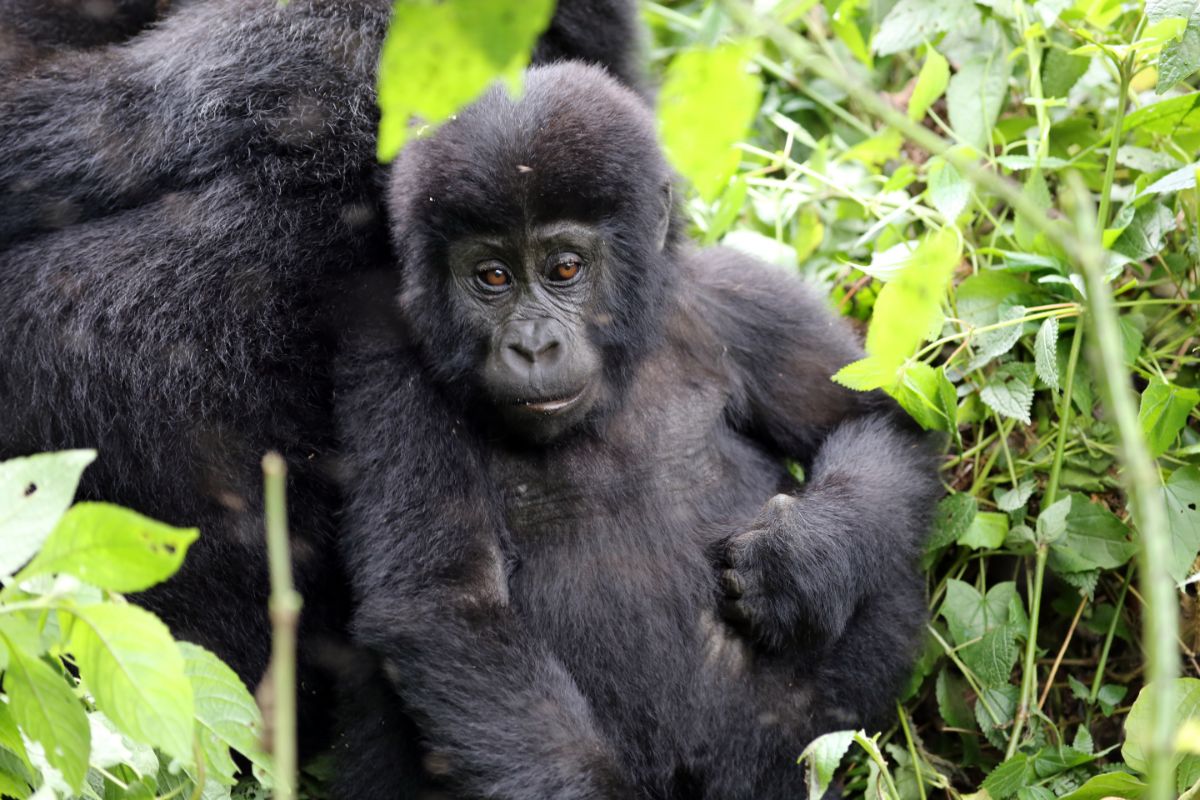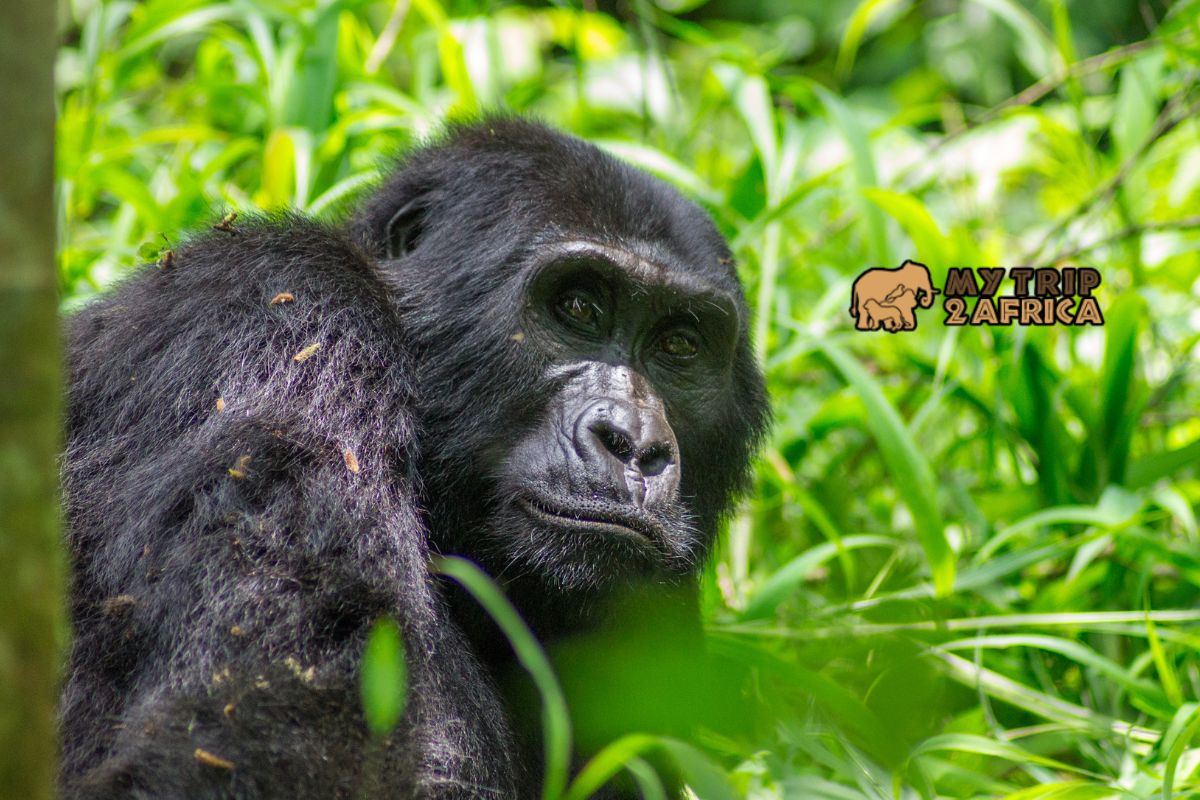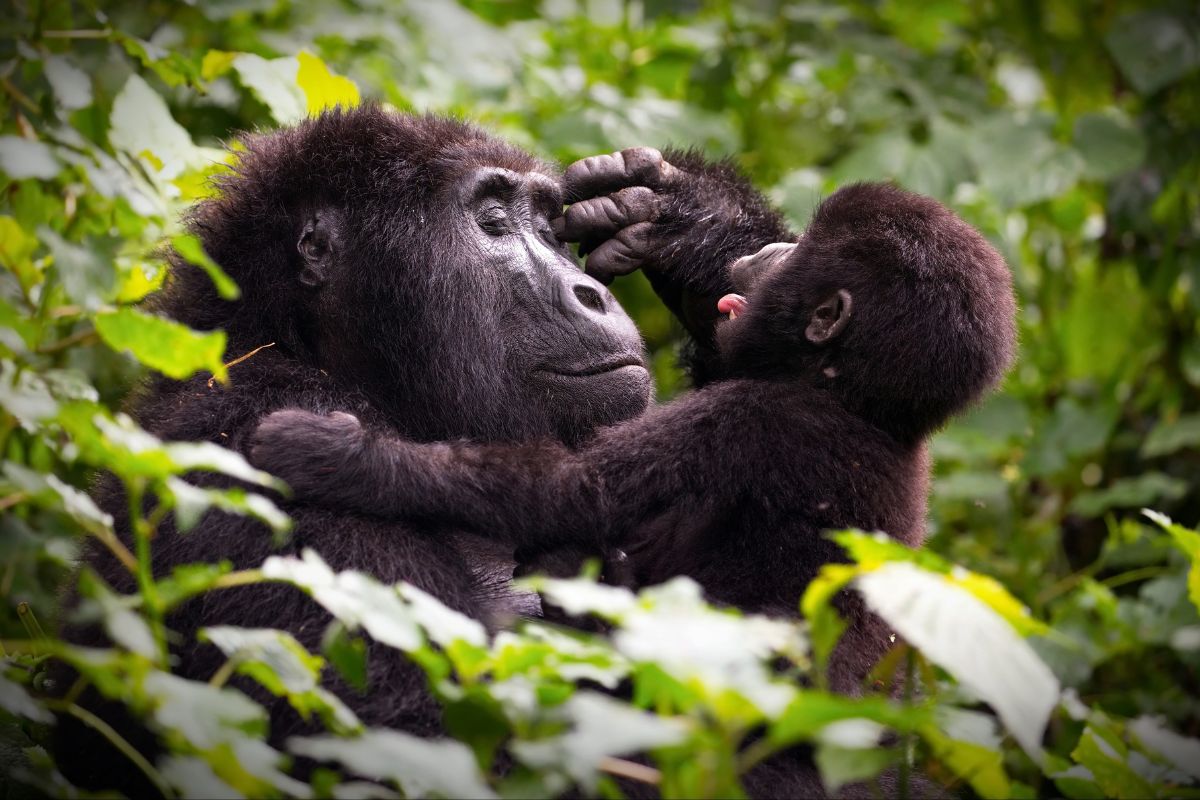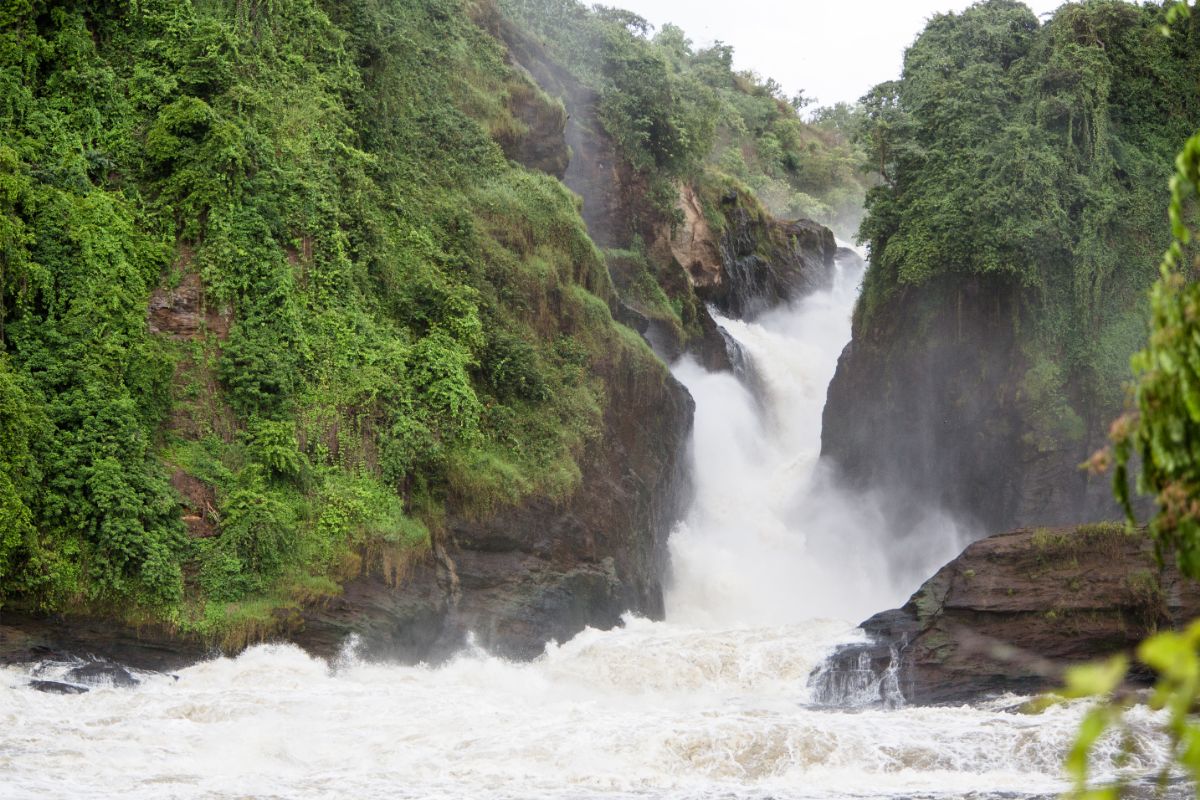Few wildlife experiences are as breathtaking as gorilla trekking, a journey that brings adventurers face-to-face…

The Best Places for Gorilla Trekking in East Africa
Gorilla trekking in East Africa is a bucket-list experience for many wildlife enthusiasts.
The thrill of hiking through lush forests, listening to the sounds of nature, and finally locking eyes with a mountain gorilla is truly unforgettable.
But with multiple destinations to choose from, you might wonder, “Where is the best place for gorilla trekking in East Africa?” This article explores the top destinations, what makes them unique, and tips for planning your adventure.
Table of Contents
| Sr# | Headings |
|---|---|
| 1 | Introduction to Gorilla Trekking |
| 2 | Why East Africa? |
| 3 | Uganda: The Pearl of Africa |
| 4 | Rwanda: The Land of a Thousand Hills |
| 5 | Democratic Republic of Congo: The Untamed Wild |
| 6 | Comparing Uganda, Rwanda, and DRC |
| 7 | Best Time to Go Gorilla Trekking |
| 8 | How to Prepare for Your Trek |
| 9 | What to Expect During Your Trek |
| 10 | Ethical Considerations in Gorilla Trekking |
| 11 | Cost of Gorilla Trekking |
| 12 | Packing List for Gorilla Trekking |
| 13 | Health and Safety Tips |
| 14 | The Impact of Gorilla Trekking on Conservation |
| 15 | Conclusion and Final Thoughts |
Introduction to Gorilla Trekking
Gorilla trekking is not just a wildlife activity; it’s a transformative experience. Whether you’re an adventurer at heart or someone seeking a profound connection with nature, seeing these magnificent creatures in their natural habitat is a moment of awe. But, where should you go in East Africa to have the best gorilla trekking experience?
Why East Africa?
East Africa, home to the majority of the world’s remaining mountain gorillas, is a prime destination for gorilla trekking. The region offers a unique blend of biodiversity, culture, and conservation efforts. The three main countries where you can embark on this journey are Uganda, Rwanda, and the Democratic Republic of Congo (DRC). Each destination offers its own set of experiences, challenges, and rewards.
Uganda: The Pearl of Africa
Bwindi Impenetrable National Park
Uganda is often referred to as the “Pearl of Africa” for its breathtaking landscapes and rich biodiversity. Bwindi Impenetrable National Park is the crown jewel for gorilla trekking in Uganda. Home to almost half of the world’s mountain gorilla population, Bwindi offers a range of trekking experiences that vary in difficulty, duration, and group size.
The park’s thick, mist-covered jungle lives up to its name, providing an immersive experience. As you trek through the dense forest, you’ll feel as if you’ve stepped back in time, into a world where nature reigns supreme. The sight of a silverback gorilla lounging in a bed of leaves, surrounded by his family, is the ultimate reward for your efforts.
Mgahinga Gorilla National Park
Though less famous than Bwindi, Mgahinga Gorilla National Park is another incredible destination for gorilla trekking in Uganda. It’s home to the Nyakagezi gorilla group, known for their frequent cross-border visits to Rwanda and DRC. The park’s unique landscape, characterized by its volcanic peaks, adds another layer of adventure to your trek.
Rwanda: The Land of a Thousand Hills
Volcanoes National Park
Rwanda is known as the “Land of a Thousand Hills,” and it’s in the lush, green mountains of Volcanoes National Park where gorilla trekking reaches new heights—literally. This park is home to the Virunga Volcanoes, a range of dormant and active volcanoes shared by Rwanda, Uganda, and DRC.
Trekking in Volcanoes National Park is a bit more challenging due to the altitude, but the rewards are well worth it. The park is also where Dian Fossey, the legendary primatologist, conducted her groundbreaking research on mountain gorillas. Visiting her grave and the Karisoke Research Center offers a poignant connection to the history of gorilla conservation.
Gorilla Groups in Rwanda
Rwanda offers a more controlled and predictable trekking experience, with well-maintained trails and shorter trekking times compared to Uganda. The park is home to several habituated gorilla groups, each with its own unique dynamics and characteristics. Rwanda’s efficient permit system and proximity to the capital city, Kigali, make it a convenient option for travelers.
Democratic Republic of Congo: The Untamed Wild
Virunga National Park
For the truly adventurous, the Democratic Republic of Congo offers a raw, unfiltered gorilla trekking experience in Virunga National Park. This UNESCO World Heritage site is Africa’s oldest national park and one of the most biodiverse areas on the continent. However, gorilla trekking in DRC is not for the faint-hearted. The political instability and challenging terrain require careful planning and consideration.
Despite these challenges, those who venture into Virunga are rewarded with a unique experience. The park is home to the world’s largest population of eastern lowland gorillas, also known as Grauer’s gorillas, in addition to mountain gorillas. Virunga’s rugged beauty and sense of isolation make it a destination for those seeking a truly wild adventure.
Comparing Uganda, Rwanda, and DRC
Accessibility and Travel Logistics
When choosing where to go for gorilla trekking, accessibility is a key factor. Rwanda’s Volcanoes National Park is the most accessible, located just a 2-hour drive from Kigali International Airport. Uganda’s Bwindi Impenetrable National Park, on the other hand, requires a longer journey, typically involving a domestic flight followed by a drive. DRC’s Virunga National Park, while accessible, requires navigating more complex logistics, including visa requirements and safety precautions.
Trekking Difficulty
If you’re concerned about the physical demands of gorilla trekking, Rwanda offers the most manageable treks with well-maintained trails. Uganda’s treks can be more challenging due to the dense forest and steep terrain, while DRC’s treks are the most demanding, often involving long hikes through rugged landscapes.
Gorilla Permit Costs
Gorilla permits are a significant cost factor. Rwanda has the highest permit fees at $1,500 per person, reflecting the country’s investment in conservation and tourism infrastructure. Uganda’s permits are more affordable at $700, while DRC offers the cheapest permits at $400. However, these costs reflect more than just price; they also correspond to the different trekking experiences offered in each country.
Best Time to Go Gorilla Trekking
Gorilla trekking can be done year-round, but the best time to go is during the dry seasons. In East Africa, the dry seasons are from June to September and December to February. During these months, the trails are less muddy, and the weather is more predictable, making for a more enjoyable trekking experience.
How to Prepare for Your Trek
Physical Preparation
Gorilla trekking can be physically demanding, so it’s important to prepare accordingly. Cardiovascular exercises, strength training, and hiking practice can help you build the stamina needed for the trek. Remember, you’ll be trekking at altitudes of up to 3,000 meters, so acclimatization is key.
Mental Preparation
Mental preparation is just as important as physical preparation. The trek can take anywhere from 1 to 8 hours, depending on the location of the gorilla group. Staying positive, patient, and focused will enhance your experience and help you fully appreciate the moment when you finally encounter the gorillas.
What to Expect During Your Trek
The Trekking Experience
Your trekking adventure begins early in the morning with a briefing from park rangers. They’ll explain the rules, assign you to a gorilla group, and guide you through the forest. The trek itself is an immersive experience, with the sights, sounds, and smells of the forest heightening your senses. When you finally reach the gorillas, you’ll spend one magical hour observing them. It’s a humbling and awe-inspiring moment as you watch these gentle giants interact, play, and go about their daily lives.
Photography and Etiquette
Photography is allowed, but with strict rules. Flash photography is prohibited, and maintaining a 7-meter distance from the gorillas is mandatory. Respect for the animals and their habitat is paramount, so always follow the guidelines provided by your guide.
Ethical Considerations in Gorilla Trekking
Gorilla trekking is not just about the thrill of the encounter; it’s also about supporting conservation efforts. The high cost of permits directly funds the protection of these endangered animals and their habitats. By choosing to trek responsibly, you’re contributing to the survival of mountain gorillas and the well-being of local communities.
Cost of Gorilla Trekking
Gorilla trekking is an expensive activity, but it’s worth every penny. The cost includes the permit, guide fees, park entry, and sometimes, a contribution to local community projects. While Rwanda is the most expensive, the experience is often more polished and accessible. Uganda offers a balance between cost and experience, while DRC is the most affordable but requires more effort and risk.
Packing List for Gorilla Trekking
- Hiking Boots: Sturdy, waterproof boots are essential for navigating muddy trails.
- Rain Gear: Weather in the forest can be unpredictable, so pack a lightweight rain jacket.
- Insect Repellent: The forest is home



